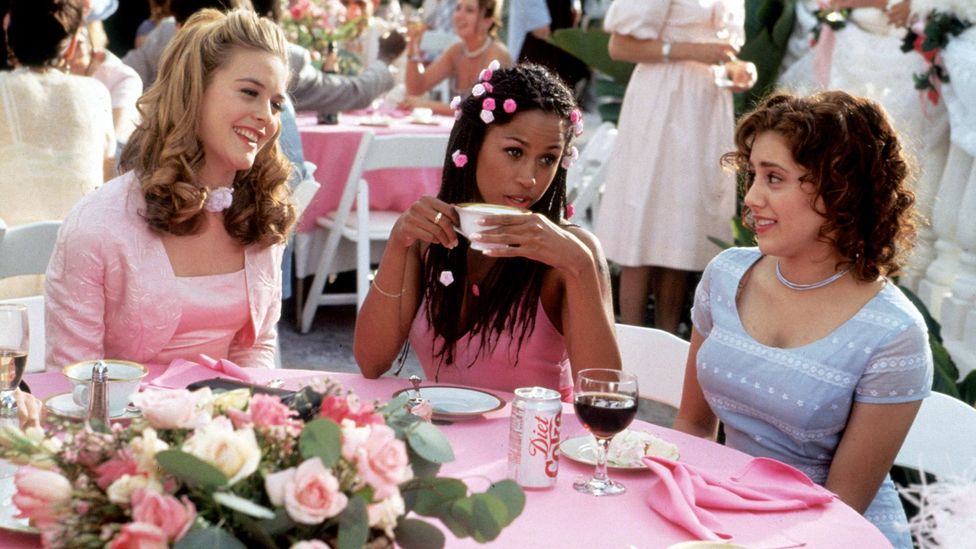Cher begins the film already looking like an ‘after’ photo, so her transformation comes from popping the bubble of her privileged lifestyle. She participates in her teacher’s charity drive, gives away lots of her material possessions, and becomes friends with peers, like stoner Travis, who she had previously excluded. On top of that, realising that her love interest Josh is attracted to brains as much as beauty, she starts watching the news, and helping with her dad’s legal work.
Clueless is a movie that cunningly subverts the movie makeover to show how attractiveness is not only predicated on how conventionally good looking you are on the outside, but how good a person you are on the inside too. Though, it should also be noted, the film doesn’t say that wanting to look glamorous is a bad thing; come the end, Cher is still wearing designer outfits. Similarly, Legally Blonde (2001) allows its bombshell lead Elle Woods to retain her hyper-feminine style, even as she goes through an intellectual transformation while studying at Harvard Law School.
A sexist transformation
The flipside to this kind of evolution, however, is the more hackneyed one that suggests a woman is only valuable in as much as she conforms to societal beauty standards. Think of Ally Sheedy’s ‘Basketcase’ Allison being made over to look more like Molly Ringwald’s ‘Princess’ in The Breakfast Club (1985), or Sandy getting sexed up at the end of Grease (1978). That’s when the trope becomes problematic.
“I think the main problem is perhaps in the result of the makeovers, which almost always shows a standard and narrow idea of beauty,” Wagner suggests. “No one ends up with frizzier hair after a movie makeover.”
In their book The Makeover in Movies: Before and After in Hollywood Films, 1941-2002, Elizabeth A Ford and Deborah C Mitchell assert that 1941’s Now, Voyager, “established the ground rules for the makeover genre,” through the metamorphosis of Bette Davis’s depressed and dowdy spinster into a beautiful and confident heiress. “Change of appearance parallels change of fortune for heroine Charlotte Vale,” the authors write, noting that the physical traits of Charlotte’s ‘before’ appearance – no make-up, frumpy clothes, bushy eyebrows, heavy dark hair and glasses – have often been replicated in makeover movies, to varying degrees, ever since.





